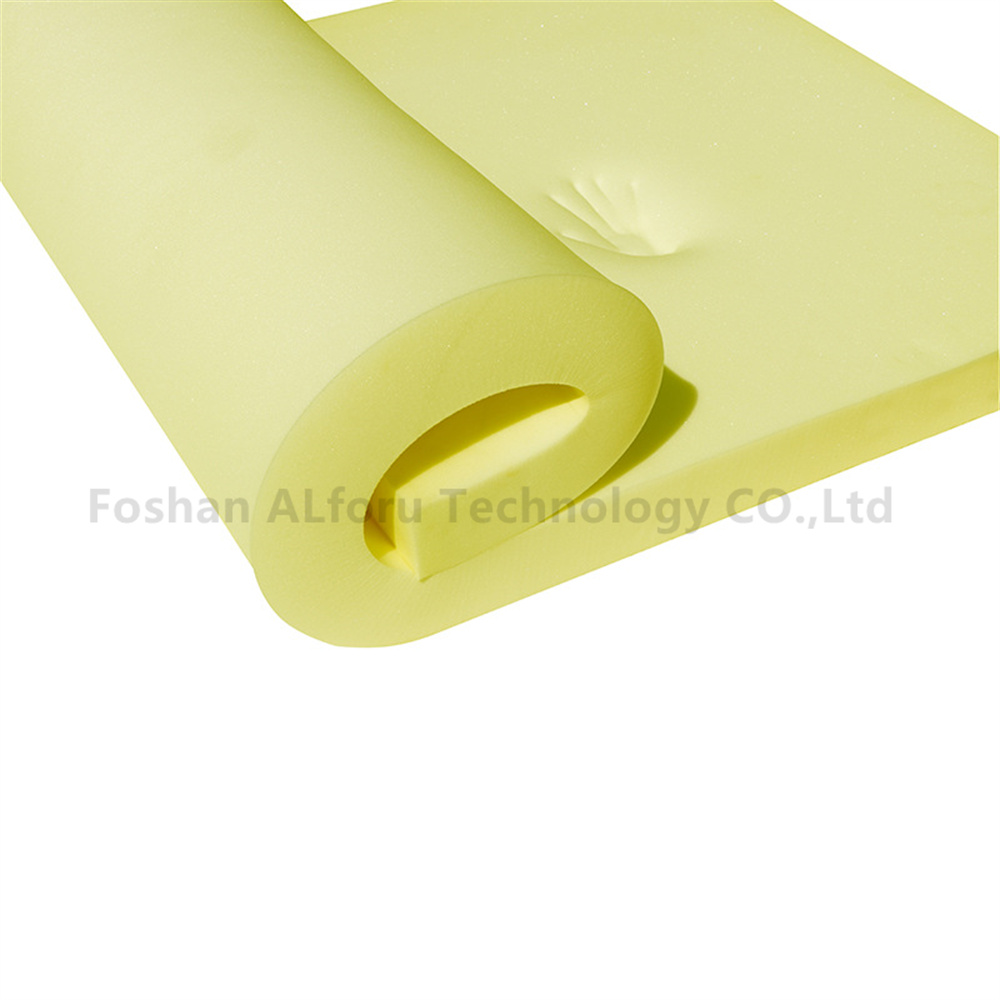Gas swelling slow rebound foam is a type of sponge developed in the production of slow rebound sponge, utilizing temperature-sensitive and viscoelastic properties. Here is some information about gas swelling slow rebound foam:
1. Main Ingredients
Common polyether with a molecular weight of 3000 or 5000, slow rebound polyether, graft polyether, silicone oil (B-8002, L-580, etc.), amine catalyst, tin catalyst, crosslinking agent, foaming agent, TDI, or modified MDI.
2. Production Process
A. Polyether is one of the main raw materials for synthesizing slow rebound foam, and it significantly influences the compatibility, uniformity, system viscosity, and mechanical properties of foam formation in the polyether composite material. As the primary polyether for gas swelling foam, it should generally be a copolymer of ethylene oxide and propylene oxide with a functionality of 4, EO content of around 70%, and a relative molecular weight in the range of 4000 to 5000.
B. Isocyanates also have a certain influence on the gas swelling sponge, and the selection of suitable modified MDI can produce foam with a good feel and ideal performance.
C. Foaming agents can be chosen: pure water or auxiliary physical foaming agents.
D. When selecting silicone oil, it should be of a relatively high activity variety.
E. The selection of catalysts should be delayed as much as possible according to the production needs, such as for molding.
3. Impact of Process Conditions
The ratio of raw materials, environmental temperature, and material temperature, as well as operating conditions (including mixing effect, speed, amount added, etc.), directly affect the physical properties of the foam. Fluctuations in the isocyanate index caused by changes in raw material ratios directly impact the physical properties of the foam and changes in pore structure. Therefore, strict control is necessary. As the environmental temperature and material temperature rise, the foaming speed increases accordingly, and the system viscosity rise rate also accelerates, directly affecting fluidity. Temperature also affects the degree of maturation and the completeness of the reaction.
4. Storage Stability of Composite Materials
The storage stability of components requires that polyether component materials maintain relatively stable foaming and physical properties during storage. This imposes specific requirements on storage conditions and material selection, especially in the choice of silicone oil. High environmental temperatures, excessive humidity, or improper selection of foam stabilizers can lead to increased viscosity, deepening color, or layering phenomena in composite materials.


